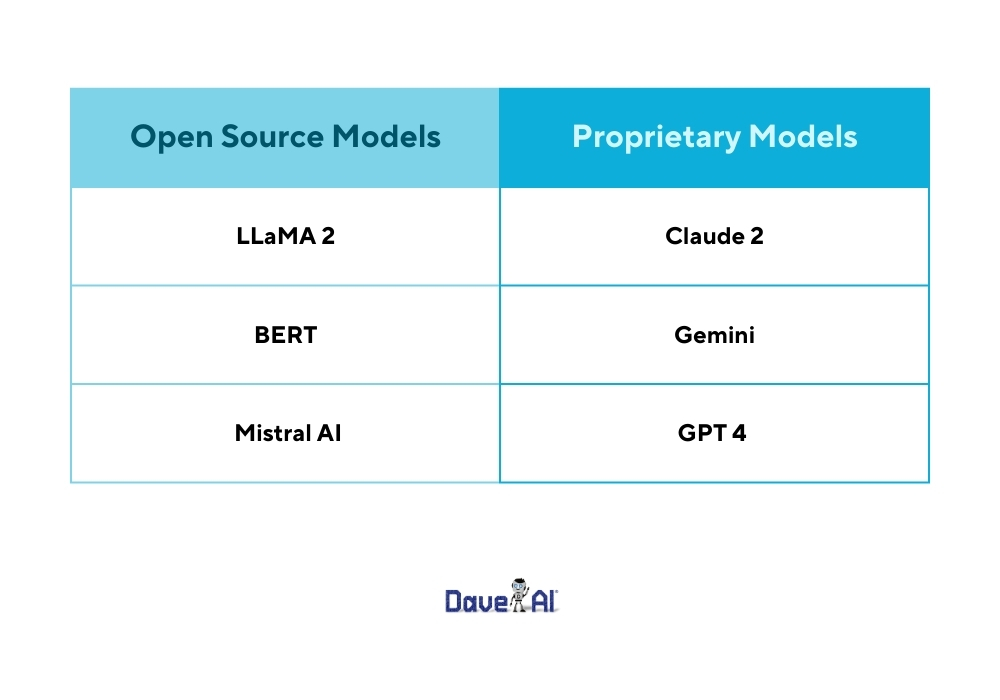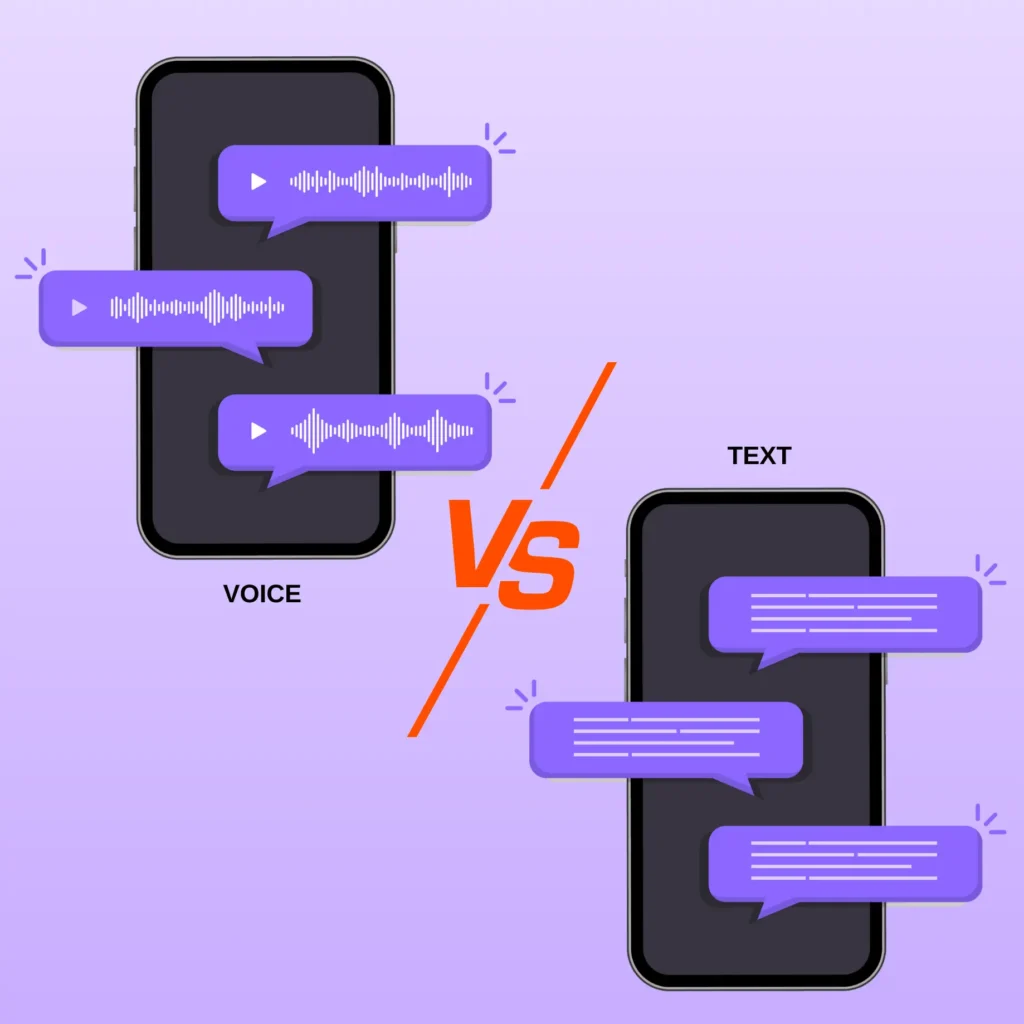LLMs are a type of AI that can understand language and generate human-like text. When looking into LLMs for your company, you have two main options – open source or proprietary.
An open-source LLM is free for anyone to use, modify, and enhance. A proprietary LLM is owned by a company that sells access, support, and customizations. Open-source models like GPT-3 are popular for testing, but proprietary systems from vendors like Anthropic often work better for production environments.
As you evaluate LLMs, think about your budget, risk tolerance, and use case. Do you want a customizable solution for complex workflows? Then a proprietary LLM tuned for enterprise content may suit you best. Is experimentation more important right now? An open-source model could be a good starting point. Whichever direction you take, LLMs are powerful technologies that can streamline processes from customer service to document generation.

The Key Differences Between Open Source and Proprietary LLMs
| Aspect | Open Source LLMs | Proprietary LLMs |
| Cost Comparison | Typically free to use and modify. This offers a cost-effective solution for developers and businesses. | It often requires a subscription or licence fee, which can be costly. These fees are used to support ongoing development and maintenance by dedicated teams. |
| Access to Source Code | This provides full access to the source code, encouraging transparency and innovation. | The source code is not available so making them a ‘black-box’ solution. This limits customization and understanding. |
| Community Support | This community-driven approach can lead to rapid improvements and a wealth of shared knowledge and resources. | Support is typically provided by the company or vendor. This offers formal customer service but potentially less flexibility. |
| Licensing Issues | It offers flexible licensing, allowing adaptations and redistribution under various open-source licences. | This comes with restrictive licensing so may limit how the software can be used, shared, or modified. |
| Vendor Lock-In | Generally less risk of vendor lock-in as users have control over the source code and can switch providers or modify the software without major hurdles. | Higher risk of vendor lock-in due to dependence on a specific company’s ecosystem and software updates. |
Advantages of Open Source LLMs for Enterprises
Here are the advantages of using open source LLM for enterprise:
Customization Capabilities
You can modify and enhance the model to better suit your business requirements. By leveraging the code, your team can improve performance for tasks like document generation, chatbots, and more.
Cost-Effectiveness
The initial subscription fees for proprietary LLMs can get expensive for large enterprises. Open source models have free upfront access. Even when you pay for cloud computing resources, overall costs tend to be lower and more flexible.
Transparency Benefits
You can audit the code in an open source LLM, enabling more accountability, explainability, and fairness compared to black box models. This transparency builds organizational trust.
IBM leverages both its own proprietary AI and open-source models like Hugging Face in employee-facing applications. For example, the AskHR tool taps various generative models to help workers get HR-related questions answered.
Benefits of Choosing Proprietary LLMs for Your Business Needs
Here are the benefits of using Proprietary LLM for business:
Reliability and Vendor Support
Proprietary LLMs offer robust reliability backing and professional services. This simplifies maintenance while ensuring high uptime. The dedicated technical support helps customise and enhance integrations.
Ease of Integration
Many proprietary LLMs are designed as ready-made solutions for business workflows. Their APIs and platforms simplify integration with common enterprise tools. This “plug and play” approach reduces your team’s lift.
Advanced Features and Updates
These models incentivize vendors to rapidly iterate. They invest in extensive model training for accuracy lifts. New advanced features are added regularly to meet customer needs.
OpenAI’s powerful GPT-4 model showcases the potential of proprietary LLMs. The advanced AI is utilised by many companies to boost workflows like customer service, text generation, and data analytics. GPT-4 also maintains strong security protections suited for enterprises.

Critical Factors to Consider When Making Your Choice: Use Cases & Requirements
When evaluating open source vs proprietary LLMs, it’s crucial to align with your key business goals, use cases and requirements.
If innovation is critical right now, the flexibility of open source allows your teams to build early prototypes and proof-of-concepts efficiently. Open source communities also drive rapid advancement. But if productivity and reliability are more important, a proprietary LLM from an established vendor may suit your needs better.
You can consider how each LLM option addresses your scaling trajectory as well. Proprietary vendors specialise in enterprise-grade capacity, security and privacy compliance. Open source offers flexibility but may require more internal resources to handle security controls, access management and governance properly at scale.
Finally, you need to review how different LLMs fit with regulations in your industry. Proprietary solutions typically enable compliance with healthcare, financial or other regulated data more seamlessly. But open source allows fully customizable data governance.
Deployment Challenges: Comparing Open-source vs Proprietary Language Models
Deploying any new technology comes with challenges. When it comes to LLMs specifically, open source and proprietary approaches have tradeoffs in integration complexity.
Open-source systems offer flexibility in modelling and infrastructure choices. But this requires more heavy lifting by your team for setup, data pipelines, access controls and governance. A 2022 survey found that over 50% of AI leaders cited integration difficulties as their top open-source obstacle.
In contrast, leading proprietary LLMs are purpose-built for enterprise reliability and security. The accessibility does come at a subscription cost. Vendors handle infrastructure, availability, data practices and model updates for you. But some customization may be tougher.
Training data needs also differ. Open-source communities create vast public datasets which can jumpstart projects. However proprietary vendors invest heavily in specialised, high-quality training corpora for business domains like healthcare, finance and more. This powers advanced accuracy in enterprise applications.
You can consider your team’s capability to direct integration resources versus utilisation needs when weighing deployment tradeoffs. The right LLM approach aligns with realistic constraints.
A Comparative Analysis: Case Studies of Enterprise Use Cases for LLMs
VMware boosted developer efficiency by deploying Hugging Face’s StarCoder model internally. This allows automated code generation while giving VMware control over security, governance, and enhancements.
Salesforce uses its proprietary LLM called XGen-7B to unlock insights from customer data. This powers automated, personalised responses for client inquiries to boost satisfaction.
Proprietary LLMs often have leading accuracy and speed by focusing resources on optimization. For example, Salesforce measured fast response times and relevancy using XGen-7B for content generation. However, open-source models like Falcon 180B have shown competitive capabilities on some benchmarks while enabling customization.
The “best” LLM depends on your needs. Proprietary solutions excel at plug-and-play productivity while open source allows modification.
The Future of LLMs in Enterprise: What’s Next?
Companies are starting to realise that large language models can be game changers if used right. These AI systems can transform customer service, content creation, data analysis and more.
For example, developers could combine proprietary and open-source models to get the reliability of commercial solutions along with the flexibility to customise as needed. This “hybrid LLM” trend can level up efficiency.
Businesses must implement transparency in these tools to build trust and prevent bias. Ethics matter hugely as adoption spreads. Business owners should prepare workers to use AI as a collaborator rather than just a cost cutter.
Conclusion
Selecting the most large language models for enterprises is crucial, but also case-by-case. For instance, if budget constraints are a top priority today, an open-source model allows free experimentation. But if fast enterprise integration matters more, a proprietary vendor could accelerate time-to-value despite subscription fees.
You can start your look for the best model with these questions: Will customization flexibility be key long-term? Or is out-of-the-box utility better right now? You can answer these objectively before comparing solution strengths.
Making this decision matrix helps identify mismatches between stated priorities and potential choices. It also surfaces implicit biases we all have. So spend time clarifying needs before evaluating options.
The open source vs proprietary LLM decision carries real consequences. Before falling for industry hype in either direction, ground yourself in an objective evaluation driven by current needs and plans.
For guidance, contact us at: 7303933763
Shashank Mishra
Shashank is an experienced B2B SaaS writer for eCommerce, AI, productivity, and FinTech tools. His interests include reading, music, poetry, and traveling.



